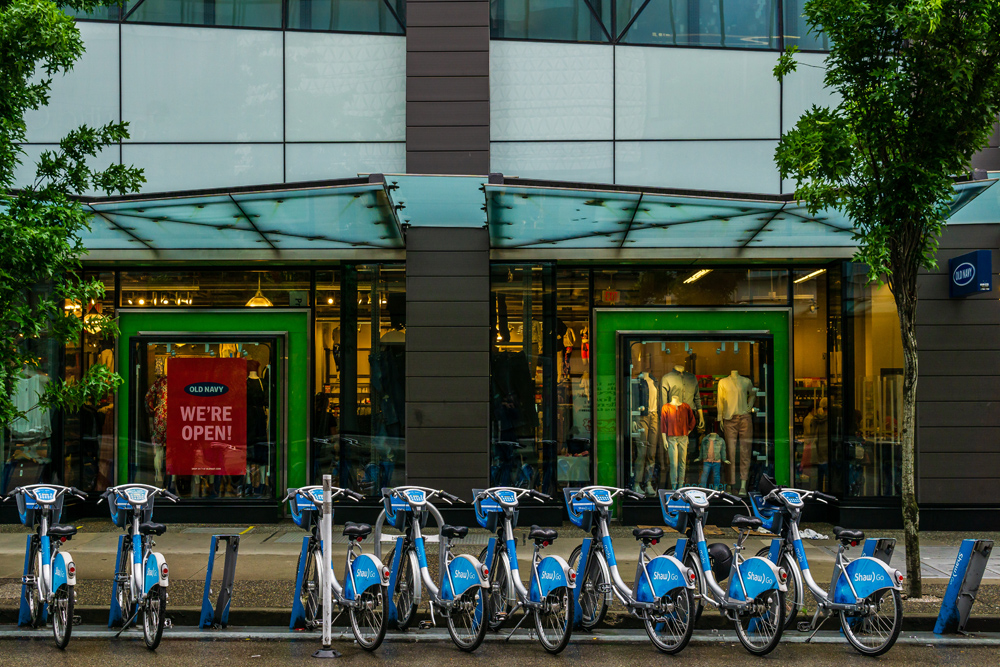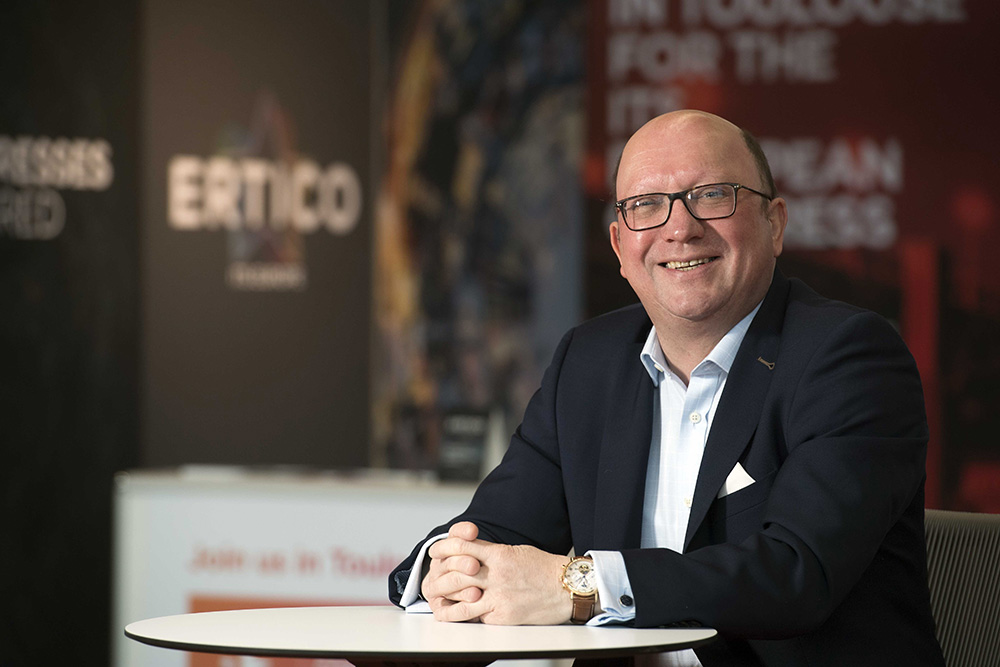
The connected vehicle revolution has begun… but it’s not moving fast enough, thinks Alfredo Escribá, chief technology officer of Kapsch. The ‘command-and-control’ model of traditional advanced traffic management systems (ATMS) is still with us – and doing a fine job, it must be said. But Escribá is frustrated that different, existing tech is not being fully embraced.
“The industry has moved into a world where data is available and there are other ways of communicating or receiving, of generating that data, as well as communicating with drivers on the road,” he says. “We believe it is time just to start getting all this into action and helping the industry to start moving forward.”
Hence, Kapsch’s ‘orchestrated corridors’, which are “trying to help the industry to move forward into achieving the value from the data, all the way up to the utilisation of connected vehicles”.
He explains: “In an orchestrated corridor we blend the traditional way of thinking on ATMS with data, new sensing capabilities, and we build capabilities to start making all this happen in the context of connected vehicles,” he says. “In many cases, the adoption of connected vehicles is so minimal in terms of usability. What we are doing with our portfolio and our solutions is to enable our customers to take the first steps into getting familiar with the essence of the technology, getting familiar with how it works, also knowing that many of the use cases still are not mature enough. Maybe yes on paper – conceptually – but not in practice.”
Detecting vulnerable road users
The company is involved in Melbourne’s Aimes (Australian Integrated Multimodal EcoSystem) Intelligent Corridor project with the University of Melbourne and Victorian Department of Transport. One of the pilots there involves “a whole corridor where all these things are happening”, he says. “There is a data element, and there are traditional road signs to communicate with connected vehicles. We are testing use cases which are very urban-oriented, meaning the key point here is managing intersections. So you can detect vulnerable road users, then you trigger alarms and warnings to the vehicles that are able to receive those alarms. A lot of the use cases are obviously safety-oriented, some of them might be meant to improve not only traffic flow but, consequently, emissions as well.”
The term ‘connected vehicle’ does not necessarily mean that you need to communicate through a physical roadside unit (RSU) to an embedded on-board unit (OBU) in the vehicle, insists Escribá.
“To some extent, at least in our opinion it can be as well done through communicating with a driver and a smartphone at the end of the day. We can never forget what is the reality. We need to cover everything.”
While connectivity has the most impact at intersections in urban environments – for example, in terms of emergency vehicle and transit pre-emption, eliminating stop/go through intersections, protecting pedestrians and cyclists - its usefulness on highways should not be underestimated.
Unexpected events
“What are the biggest problems that you have in highways?” he asks. “Roadworks that nobody's expecting while driving and that you could know ahead of time. Or unexpected events and queues that you're running towards? On this one, the US is a little bit behind Europe. In the US, the density of variable message signs in many cases will not allow you to provide enough information ahead of time to drivers. That could be really solved with the connected vehicle type of things that we are talking on this orchestrated corridor – the messages about where the congestion is forming, where you have the queue, and or where there is construction, are so easy to be sent to mobile applications or to a connected vehicle.”
The opportunity to decentralise the process is exciting to Kapsch. “I mean, that is something that we can enable very easily from the traffic management centre,” says Escribá. “[But] these are part of the capabilities that we are enabling our customers to do: you don’t need to send these messages any longer only through your message sign - you can pump it into a mobile application or into a connected vehicle. This is what we are transforming - it exists.”
So far, so good. But he is adamant that more players need to come to the table to make it work. His one wish for moving connectivity forward is this: “I would love to have the [automotive] OEMs and the big mobile applications at the table, helping us to get these messages into their users. Because the rest, we can do: we are doing it right now but to make the use cases really work, we need to get the messages to the drivers. This is what I call adoption. We can build mobile applications for the same purpose but we know that they don't have adoption. So the other actors that we need to come to the table for this to happen is the more widespread mobile applications that people use while driving, so they start making use of this information. That would be my wish.”
If the OEMS “don't want to play”, then it’s a problem: “I have the message, I can send the message - but he's not picking up the message!” Escribá laughs.
Extracting the value
Up to now, he believes the ITS industry has talked about connected vehicles in terms of simply putting a lot of RSUs into the field. “Let’s be critics with ourselves in the industry - this is all that in many cases has been done,” he says. “‘Connected vehicle’ was translated into ‘yes, let's deploy roadside units’. I think that the big change that we are taking on is trying to get this to happen in terms of extracting the value. I can install a bunch of RSUs - but I want to have insight into how that is behaving on the one side, so I need to provide something for someone to look into that data, I need to know how users are behaving. One of the things that we are doing on this is to give customers tools as well to get access to that data and analyse our data. Why? Because I want to know when I send a safety message of any kind how the driver is behaving. Are they doing something when they receive that message or don’t they care?”
Kapsch – and by implication, everyone else in the industry - is going to have to give up something in order for all this to work: namely, access to data. “Customers will have the data and that is one of the reasons why, for instance, in two of our latest deployments in terms of ATMSs, those deliverables include a data hub, that you can pump all the data that you want into,” Escribá explains.
“So it is moving this into the next step of making things happen; it is no longer about installing RSUs. Now let's move it into how we get this in reality into vehicles. The data a transportation agency collects, from our point of view, belongs to the agency. A lot of companies in the data space may try to secure the data, and own that data, and I think that is to some extent slowing down part of the deployment. So we don't think that way. You know how much proprietary protocols, lack of standardisation, has dragged this industry down for many, many years. Is that the right thing to do? Are you giving value? I don't think that value is created because you make someone your prisoner. Transportation definitely still needs to find a way of making the whole ecosystem work - we are not there yet.”
Getting more coverage
While he does not believe OEMs are moving quickly enough, he sounds reasonably hopeful. “It can be done today,” he says. “I think they need to get on board. And is this something that our competition should be doing? Yes, because at the end of the day you need to have coverage.”
End customers – the drivers – require coverage above all. “This cannot work on one road and not on the next road I’m driving: I need to have a continuation of the same safety case and so forth,” he points out. “That's why I'm saying this is the ecosystem that needs to make a push – and that goes from our competition to other companies and other parts of the sector that need to enable this.”
Obviously every company has to see a decent return from their investment from this collaboration. “I mean we are not non-profits!” Escribá laughs. “You always need to make profit otherwise, we will not exist. But yes, this affects the value chain from the data generation to the data use and whatever is in between.”
Is there any area of the world where things are progressing well at the moment in terms of connectivity? “Define ‘well’,” he smiles. “It continues being slower than we would like. I think this will probably not be a surprise to anybody. I think that North America - especially the US - continues moving from this point of view faster than Europe. There is more activity, more trials, more pilots that are going on - more testing on these, even some wider deployment. But it still is slow. Europe, to some extent, I would say in the last two years is waking up a little bit. There are some bigger deployments and even some procurements that are going on now. But I think, generally speaking in the industry, we are kind of slow, not moving as fast as it could be. Because remember: I think that we could not argue that every vehicle that has been sold today - or the majority of the vehicles that are being sold today - have connected vehicle capabilities.”
There is also the issue of political will, putting in place the means to help make this happen. For instance, the Federal Communications Commission decision on C-V2X has gone some way to helping boost connectivity in the US.
The right direction
“Broadly, the role that the public sector could take is maybe finding a way to get the ecosystem to the table,” he thinks. “Trying to resolve putting them together in a way that is commercially viable for the private sector as well. Probably the public sector could take a more active role on this.”
Should they attempt to enforce it, like they have done with other safety issues, for example? “ I'm not sure that would work. But I think there is more space to put the ecosystem together.”
North America is further ahead than Europe, largely because of business culture, he says. “I think it's because of the agility and entrepreneurship difference between them: I think that North American business is more agile, goes moving into action and trialling and testing, promoting some of these things. I think that their way of doing it in Europe is more thinking, it is generally speaking, slower. More than that, Europe has been devoting a lot of time on what might be the standard for connectivity, on how are we going to move forward. The European Union is helping. And providing the funding for doing some of these things, helping transportation agencies to test and do these early deployments, that is one of the best things that can be done and now it's happening. So I feel it's getting into the right direction.”
Helping people to understand the options and possibilities is a major function of today’s connected vehicle pilots and deployments. “Definitely, it will help because it will really make the agencies on the one side significantly more familiar - understanding better what can be done, what cannot, and getting rid of some of their concerns today,” Escribá concludes. “So they will learn, they will see their potential. And by doing this we are paving the way and eliminating excuses on the other side of the ecosystem: ‘Yes, I could do it, but it does not exist’. No, hold on one second - now it exists, at least in these pieces of road! Please make use of it. So at the end, you need to break the loop. Hopefully, we are successful and we are contributing to break that vicious circle.”












